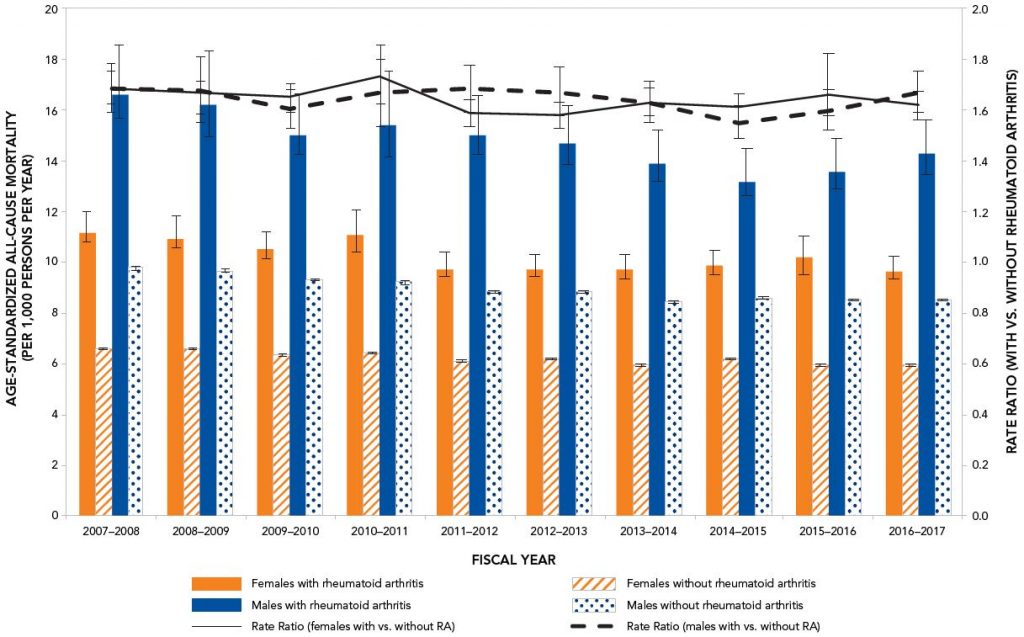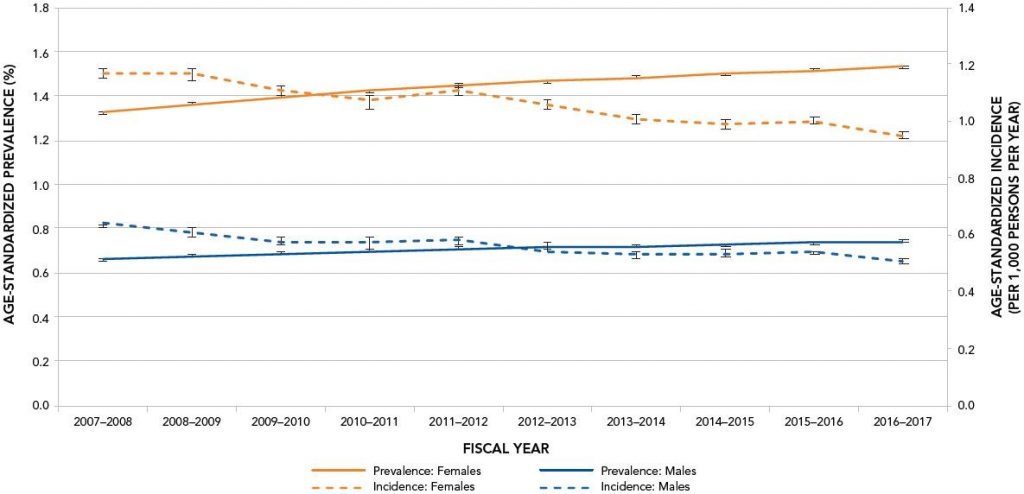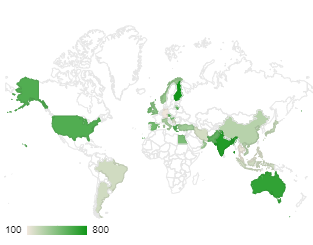Rahimi Research Lab
Decision support system (DSS) for RA
Rheumatoid arthritis (RA)
Decision Support System (DSS)
__________________________________________________________________
Based on the evaluated value, the patient is in the category of:
Error # 318 : No answer (YES/NO) was selected in Question (1)
Error # 328 : No answer (YES/NO) was selected in Question (2)
Error # 338 : No answer (YES/NO) was selected in Question (3)
Error # 348 : No answer (YES/NO) was selected in Question (4)
Error # 358 : No answer (YES/NO) was selected in Question (5)
Error # 368 : No answer (YES/NO) was selected in Question (6)
Error # 378 : No answer (YES/NO) was selected in Question (7)
Error # 388 : No answer (YES/NO) was selected in Question (8)
Error # 398 : No answer (YES/NO) was selected in Question (9)
🟠 Please Answer the following questions. If the answer is yes, then please select a value between 1 to 10, representing from extreme low to extreme high.
🟠 The value “1” represents Extremely Minor”, and the value “10” represents Extremely Severe
| 1 | Rest pain | Pain is one the most common symptoms in patients with RA. |
| 2 | Morning stiffness | This symptom occurs commonly among patients with RA and leads their life quality to be reduced. |
| 3 | Symmetry of joint infection | Joint involvement, which occurs symmetrically in the patients with RA, is one of the hallmarks of the RA. |
| 4 | Redness | It is possible that in patients with RA, due to inflammation, joints become red and even warmer. |
| 5 | Body pain | Patients with RA usually experience moderate as well as persisting pain in their body. |
| 6 | Swelling | One of the symptoms of RA is synovitis, which can breed swelling in the joints. |
| 7 | Rheumatoid factor (RF) | This test determines the amount of RF in one’s blood. |
| 8 | Erythrocyte sedimentation rate (ESR) | It is a test which is able to determine the severity of inflammation inside a body. |
| 9 | Anti-cyclic citrullinated peptide antibody test (Anti-CCP) | It is a lab test which is positive in 57% to 66% of patients suffering from RA. |
Rheumatoid arthritis (RA)
Socio-Demographic Information Form
🟠 Mandatory fields, shown with red star * , are questions that must be answered before the form can be submitted.
🟠 Those questions without the mandatory fields are optional.
Rheumatoid arthritis (RA)
Other Relevant RA Information





Possible factors to determine if they change person’s risk of developing RA:
🟠 Age.: Although RA can begin at any age, the likelihood increases with age and the onset of RA is highest among adults in their sixties. “
🟠 Sex: Study shows that new cases of RA are typically two-to-three times higher in women than men.”
🟠 Genetics/inherited traits.: People born with specific genes, called HLA (human leukocyte antigen) class II genotypes, are more likely to develop RA. These genes can also make your arthritis worse. The risk of RA may be highest when people with these genes are exposed to some environmental factors such as smoking or obesity.
🟠 Smoking: Most studies show that cigarette smoking increases a person’s risk of developing RA and it can make the disease worse.
🟠 History of live births: Women with kids have lower risk of developing RA as compare to women who have never given birth before.
🟠 Early Life Exposures: Studies show that some early life exposures may increase risk of developing RA in adulthood. For instance, one study found that children whose mothers smoked had double the risk of developing RA as adults. Children of lower income parents are at higher risk of developing RA as adults.
🟠 Obesity: Studies examining the role of obesity found the being obese could increase the risk of developing RA. The studies show that more overweight a person was, the higher his or her risk of developing RA became.
Source: Centers for Disease Control and Prevention , National Center for Chronic Disease Prevention and Health Promotion , Division of Population– Health (July 2020)
RA has many consequences, including physical and social consequences and it can lower the quality of life, causing pain, disability, and premature death.
🟠 Premature heart disease: As part of consequences of having Rheumatoid arthritis, people with RA are at a higher risk for developing other chronic diseases such as heart disease and diabetes. In terms of prevention, there are treatments for developing of heart disease, which also focus on reducing heart disease risk factors. For instance, doctors advise patients with RA to lose weight and stop smoking.
🟠 Obesity. RA patients who are obese have an increased risk of developing heart disease risk factors such as high cholesterol and high blood pressure. Obesity also increases risk of developing chronic conditions such as heart disease and diabetes. People with RA who are obese experience fewer benefits from their medical treatment compared with those with RA who are not obese.
🟠 Employment:RA plays an important role at work place, as it can make work difficult. Studies show that adults with RA are less likely to be employed than those who do not have RA. As the disease advances, many people with RA find they cannot do as much work as they used to. Losing jobs among people with RA is highest among people whose work are physically demanding. Conversely, losing jobs is lower among those in working with few physical demands, or in work where they have influence over the job pace and activities.
Source: Centers for Disease Control and Prevention , National Center for Chronic Disease Prevention and Health Promotion , Division of Population– Health (July 2020)
Many aspects of daily living such as work, leisure and social activities could be influenced by RA in people’s life. On the positive side, there are multiple low-cost strategies in the community that are proven to increase quality of life.
🟠 Get physically active: Studies recommend that adults should be physically active for ideally 150 minutes per week. Activities may include swimming, walking, or biking 30 minutes a day for five days a week. People can break these 30 minutes into daily three separate ten-minute sessions. Regular physical activity can also reduce the risk of developing other chronic diseases such as diabetes, heart disease, and depression.
🟠 Go to effective physical activity programs: In case that people unsure about making arthritis worse or unsure how to safely exercise, participation in physical activity programs can help reduce pain and disability related to RA, improving mood and ability to move. These classes could take place at parks, local YMCAs, and community centers. Classes could help people with RA to feel better.
🟠 Join a self-management education class: Participants with RA and arthritis gain confidence in learning how to live well with arthritis and RA, how to control their symptoms, and how RA and the arthritis could affect their lives. Learn more about the proven self-management education programs that CDC recommends.
🟠 Stop Smoking: Smoking cigarettes exacerbate RA and can cause other possible medical problems. It can also make it more difficult to stay physically active, which is an important part of managing RA. Get help to stop smoking by visiting I’m Ready to Quit on CDC’s Tips From Former Smokers website.
🟠 Maintain a Healthy Weight: Those with RA and who are obese are prone to numerous problems and therefore it is important to maintain a healthy weight. For more information, visit the CDC Healthy Weight website.
Source: Centers for Disease Control and Prevention , National Center for Chronic Disease Prevention and Health Promotion , Division of Population– Health (July 2020)
A study in 2017 showed that 19.3% of Canadians aged 15 and older, which is roughly 5.7 million people, had arthritis. This proportion was lower than 2016 by 20.6%.
This study showed that females were more likely than males to report that they had arthritis. The chronic condition was prevalent among 22.4% of females and 16.0% of males in 2017. Also the study showed that among both sexes, the percentage reporting arthritis increased with age, with the highest rate among both males and females aged 75 and older.
Source: Statistics Canada 2017
Source: Statistics Canada 2017
Prevalence of rheumatoid arthritis in the world in percentage (%)
The non-coloured countries represent the lack of data in this paper research. Those countries with available data presented with colour demonstration.



